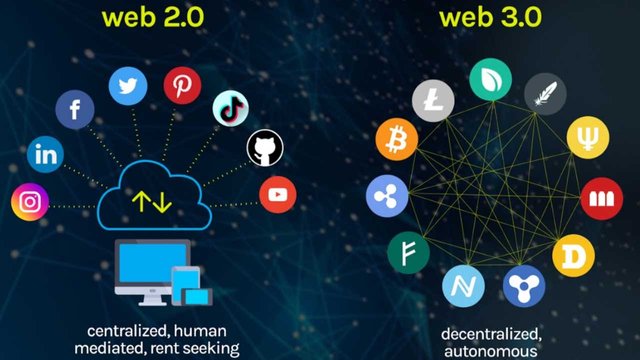What Is Web3 (or Web 3.0)?

Web3 is the third generation of the internet currently being built, where websites and apps will be able to process information in a smart human-like way through technologies like artificial intelligence (AI), machine learning (ML), Big Data, decentralized ledger technology (DLT), and more.
At present, Web3 is still a rather undefined concept that could take 5-10 years to build if we look at the transition from Web2 to Web3. In fact, we might very well first see a prolonged era of Web2.5, where Web2 platforms gradually onboard useful Web3 protocols.

What Is Web3 Used For?
While Web3 technology is still very nascent, it already offers a number of distinct use cases. Here are the top 5 at present:
METAVERSE:The metaverse is essentially a virtual world — and can be thought of as a 3D version of the Internet and digital representation of the real world. Users can navigate either with computers, phones or VR/AR headsets, providing a deeply immersive experience that will increasingly blur the edges of reality.
BLOCKCHAIN GAMING: The success of Axie Infinity in 2021 kicked off the play-to-earn mania, promising gamers the opportunity to make money from playing games. Soon, thousands of copycat blockchain-powered games popped up offering lucrative rewards to players in the form of native tokens which skyrocketed at launch and then continued to tank. While the bear market devastated the high-risk sector of crypto gaming, it’s not game over just yet. A number of high-quality crypto games are still in development, while Web2 gaming behemoths like Epic Games are distributing Web3 games. Expect a strong resurgence in blockchain gaming, when developers figure out how to make it fun and exciting enough for players.
Creator Economy: One of the biggest gripes with Web 2.0 giants such as Facebook, YouTube and Spotify are that they don’t adequately reward artists and creators on their platforms for the visitors they pull in. With Web3, creator communities of artists, writers, musicians, designers and developers will finally be able to bypass intermediaries and connect directly with their audiences and supporters. This will help them earn the bulk of any revenue generated in the process.
Decentralized Autonomous Organizations (DAOs): Much has been said about the power of decentralized autonomous organizations (DAOs) to create a truly democratized and self-governing organization that will transcend human interference and geographical challenges through the power of smart contracts.While DAOs have taken some flak due to crypto projects tying it to governance tokens that soon become worthless, the need for DAOs still remain and this innovation could potentially exist as a dominant organizational structure once projects know how to optimally structure it.
Decentralized Finance (DeFi): Decentralized finance (DeFi) exploded in value in mid-2020, offering cryptocurrency users the ability to invest, borrow, lend, trade and stake crypto assets permissionlessly. While DeFi faced its fair share of security issues like hacks and scams, the industry offers Web3 the opportunity to onboard potentially billions of users that have been neglected by traditional finance firms such as banks. DeFi products and services will undoubtedly be used in leading Web3 protocols looking to incentivize their users.
Web2 vs Web3
Web2 is the incumbent centralized version of the internet currently, which is dominated by big and powerful tech firms such as Meta (Facebook and Instagram), Alphabet (Google and Youtube), Amazon, Uber and Airbnb. While they provide amazing various digital services for free (such as maps, social media, streaming, etc), the TANSTAAFL principle (“there ain’t no such thing as a free lunch”) applies as usual when a service is free. If you can’t see how a company makes money off its products, then it’s simple: you are the product.
These Web2 behemoths monetize their user data to the full, often applying it for dubious purposes (see Facebook’s Cambridge Analytica scandal) to maximize profits, without sharing any profits with users. They also exert tight control over what is and what isn’t allowed on their services (in some cases rightly so).
Web 3.0 (or Web3) is a decentralized and open-source internet currently being built that aims to overcome these Web2 failures, and where users have more control over freedom of speech, what data to share and why, and how it gets used.
In Web3, like crypto, infrastructure service providers, projects, and users are usually incentivized to support a network through its native asset rewards, e.g. running a node or sharing user data. Since Web3 is not centralized and relies on ordinary users to provide support, it has the ability to scale much higher than Web2 firms over time, since our data consumption needs should become exponentially higher as media consumption, artificial intelligence, Internet of Things (IoT) continue to require more resources.
Web3 can potentially unlock a whole new world of decentralized applications, digital economies, and trustless transactions and remove any digital borders or gatekeepers that stand between users, no matter where or who they are.
